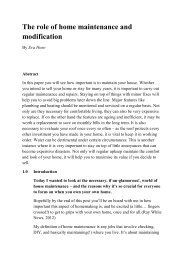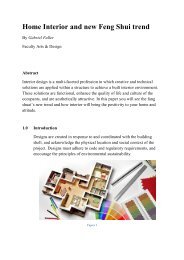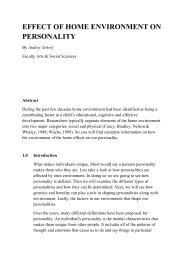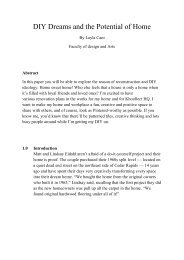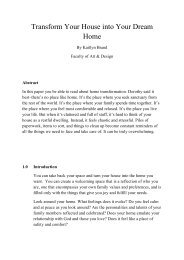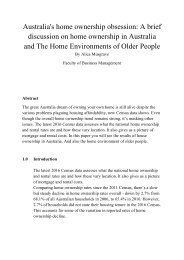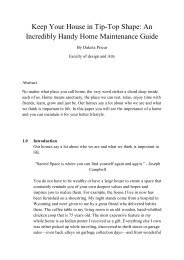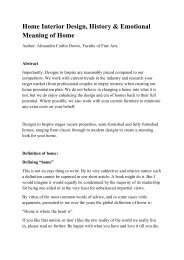Design a Smart Home Interface
Create successful ePaper yourself
Turn your PDF publications into a flip-book with our unique Google optimized e-Paper software.
where you tap through a series of menus and options just to turn<br />
something on or off. The old GUI model is failing.<br />
But it‟s the future! Which means telling your home to wake you up at<br />
7am and open the blinds on the non-sunny side of the room while getting<br />
your coffee started and the TV set to the morning news shouldn‟t have to<br />
involve you flipping through 4 apps and countless steps. You should just<br />
say it before you go to sleep and the house effortlessly remembers to do<br />
it.<br />
From a user interface perspective, your voice is practically invisible and<br />
has minimal learning curve. Good user interface designs of the future will<br />
inherently eliminate as much of the learning curve as possible by<br />
leveraging behaviors that users are already accustomed to. A good CUI<br />
will backload all the heavy lifting of tapping through menus, selecting<br />
options, and creating rules by understanding natural language, context,<br />
and user intent.(Jason, 2015)<br />
A smart home environment can be defined as “a dwelling incorporating a<br />
communication network which connects the key electrical appliances and<br />
services, and allows them to be remotely controlled, monitored or<br />
accessed” In the context of energy efficiency, emerging smart grid<br />
technologies have been applied to reduce the energy consumption of<br />
electric devices installed at home, to seek out the lowest rates, and<br />
contribute to the smooth and efficient functioning of the electric grid.<br />
Although most of them are commercially available, the limited service<br />
scalability, the complexity of configuration and the low usability prevent<br />
their mass adoption. Rashidi and Cook have demonstrated that many of<br />
these technologies are brittle and do not adapt to the user's explicit and<br />
implicit wishes. It has been demonstrated that the success of a<br />
management system for home energy efficiency is mostly determined by<br />
its ability to motivate users to adopt it in everyday life. As motivation<br />
passes through the usability and acceptability of home automation control<br />
devices, they both become key requirements in device design.<br />
A computer-based interface is then necessary to properly display<br />
information and manage the system. The increased need of accessible and<br />
usable human-computer interfaces has triggered research to develop<br />
structured methods and related tools to evaluate their utility and usability.




